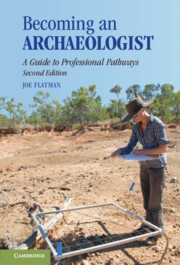3 results
Chapter 7 - Public and Community Archaeology
-
- Book:
- Becoming an Archaeologist
- Published online:
- 27 October 2022
- Print publication:
- 03 November 2022, pp 214-241
-
- Chapter
- Export citation

Becoming an Archaeologist
- A Guide to Professional Pathways
-
- Published online:
- 27 October 2022
- Print publication:
- 03 November 2022
2 - The Charity Sector, Its Goals and Accumulation
- from Part I - Charities and Accumulation Delineated
-
- Book:
- Charity Law and Accumulation
- Published online:
- 23 July 2021
- Print publication:
- 05 August 2021, pp 21-50
-
- Chapter
- Export citation

